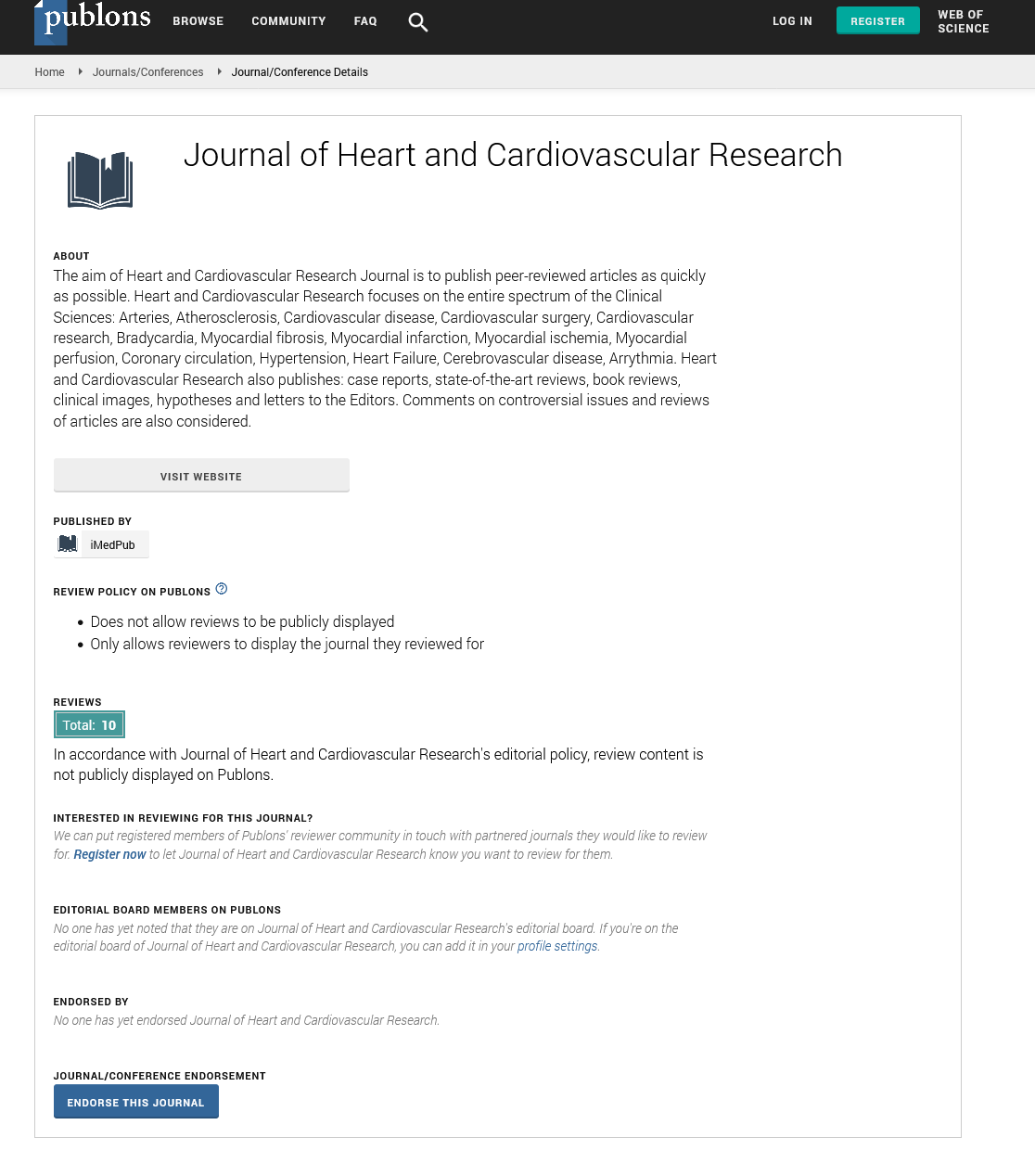ISSN : ISSN: 2576-1455
Journal of Heart and Cardiovascular Research
Relationship between the insulin resistance and circulating predictive biochemical markers in metabolic syndrome among young adults in western Algeria
22nd International Conference on New Horizons in Cardiology & Cardiologists Education
March 07-08, 2019 Berlin, Germany
Mohammed Ilyes Belhayara A
University of Oran, Algeria
Posters & Accepted Abstracts: J Heart Cardiovasc Res
DOI: 10.21767/2576-1455-C1-003
Abstract
Aim: The metabolic syndrome (MetS) becomes increasingly obvious from an early age. The current study aimed at exploring the relationship between insulin resistance and the main biomarkers of MetS in young adult Algerian patients.
Methods: Glucose, HbA1C, total cholesterol (TC), high density lipoprotein cholesterol (HDL-C), low density lipoprotein cholesterol (LDL-C), insulinemia and C-peptide, adipokines (leptin, adiponectin), inflammatory cytokines (IL-6 and TNF-a), us-CRP and GLP-1 were measured by suitable methods. Homeostasis model assessment (HOMA) was used to detect the degree of insulin resistance.
Results: The MetS patients displayed higher glucose, insulin, HbA1c values and impaired lipid profile as judged by increasing TC, TG, LDL-C levels and lower HDL-C. Furthermore, adipokines, HDL-C and CRP contents were significantly higher whilst TG and LDL-C were much lower in MetS female group as compared to male patients suggesting most pronounced metabolic perturbation in the latter group. The probability of a significant correlation between HOMA and studied variables was often higher in female than male subjects. Such was the case for total cholesterol, HDL-cholesterol, triglycerides, adiponectin, interleukin-6, TNF-a and hs-CRP.
Conclusion: The high rate of metabolic syndrome among young obese adults is alarming; this requires extensive investigations in prone subjects.
Biography
Google Scholar citation report
Citations : 34
Journal of Heart and Cardiovascular Research received 34 citations as per Google Scholar report
Journal of Heart and Cardiovascular Research peer review process verified at publons
Abstracted/Indexed in
- Google Scholar
- Sherpa Romeo
- China National Knowledge Infrastructure (CNKI)
- Publons
Open Access Journals
- Aquaculture & Veterinary Science
- Chemistry & Chemical Sciences
- Clinical Sciences
- Engineering
- General Science
- Genetics & Molecular Biology
- Health Care & Nursing
- Immunology & Microbiology
- Materials Science
- Mathematics & Physics
- Medical Sciences
- Neurology & Psychiatry
- Oncology & Cancer Science
- Pharmaceutical Sciences
